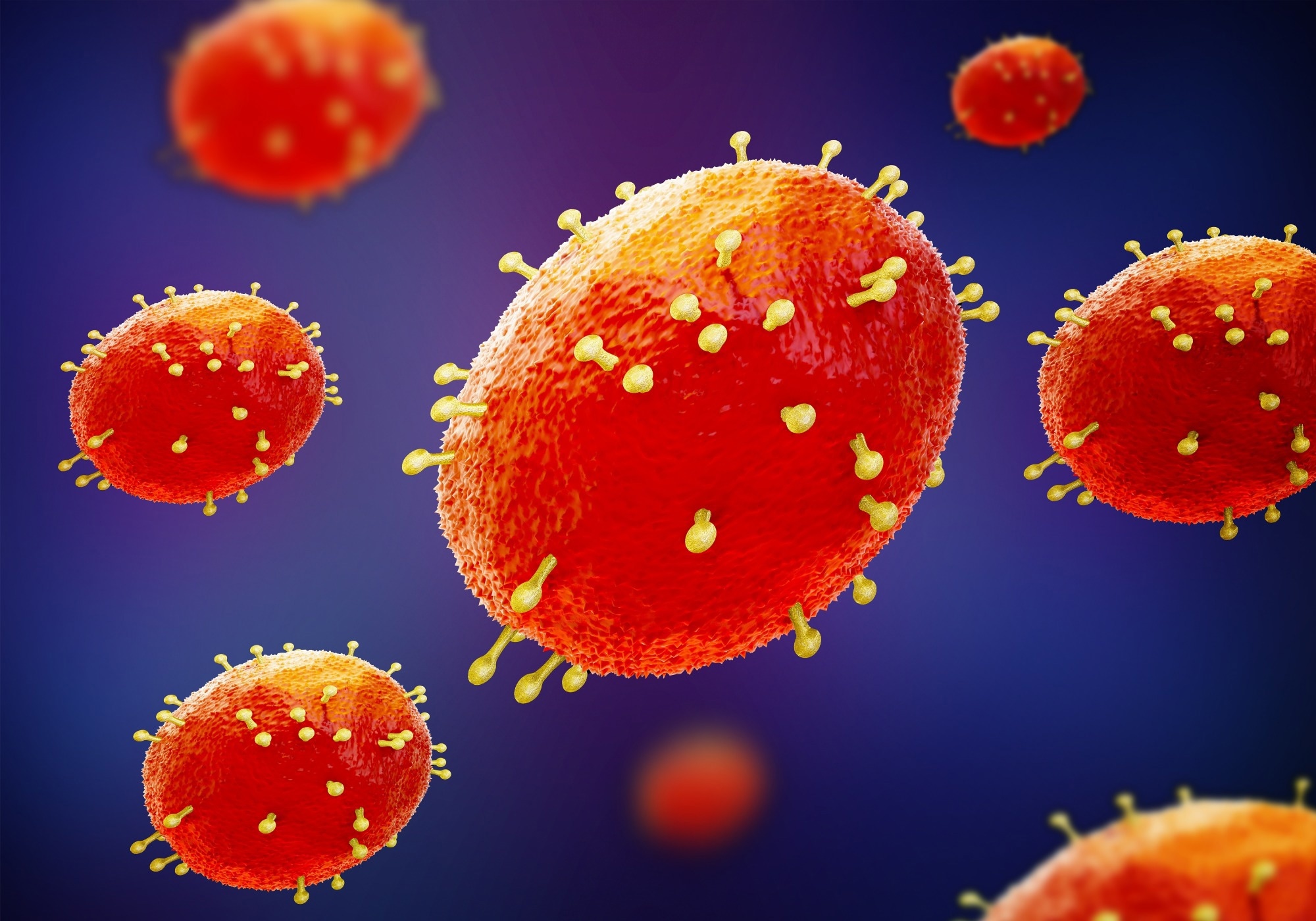In a recent study published in the Journal of Infection, researchers used laboratory diagnostic testing data of monkeypox cases. They performed mathematical modeling to predict how long monkeypox viral deoxyribonucleic acid (DNA) remains detectable in different body fluid samples.
 Study: Persistence of monkeypox virus DNA in clinical specimens. Image Credit: MIA Studio/Shutterstock
Study: Persistence of monkeypox virus DNA in clinical specimens. Image Credit: MIA Studio/Shutterstock
Background
The monkeypox virus belonging to the Orthopoxvirus genus, was, until very recently, endemic to the west and central African countries. As of August 2022, there have been monkeypox outbreaks in 99 countries.
Monkeypox presents itself as mucosal and skin lesions, largely in the genital, perianal, and oropharyngeal regions, with high prevalence among men who have sex with men.
Monkeypox confirmations are based on positive polymerase chain reaction (PCR) tests which detect the monkeypox viral DNA in the fluid sample. While various body fluid samples have been used to test for monkeypox, there is a shortage of information on how stable the viral DNA remains in these samples. This information could greatly improve the accuracy of clinical diagnostic methods for monkeypox.
About the study
In the present study, the researchers used archived laboratory test results to gather molecular detection data, which were further grouped based on the age and sex of patients, human immunodeficiency virus (HIV) status, and clinical manifestations of monkeypox.
They used mathematical models such as the parametric Weibull regression, log-normal, and gamma models to estimate the duration for which monkeypox viral DNA could be detected in different body fluid types. The time until loss of DNA detection was estimated based on the number of days between the onset of symptoms and the first negative PCR test. For samples with ambiguous results, the time between the last positive result and the first negative result was considered.
The study included 62 monkeypox cases, of which 23 were urine samples, 19 were swabs from the lesions, and nasopharyngeal and rectal swab samples were each 17. Semen, blood, fecal, and saliva samples were 16, 15, 14, and 14, respectively. The sample set comprised 49 males and 13 females, with 51 HIV-negative individuals.
The clinical manifestations were skin rashes and lesions, fever, lymphadenopathy, myalgia, headaches, chills, and fatigue in decreasing order of reported frequency.
Results
The results from the mathematical modeling indicated that monkeypox viral DNA persistence in body fluids ranged from 5.7 to 13.5 days. The median time was the highest for urine samples (13.5 days), followed by semen and blood samples (11.4 and 10.5 days, respectively). The viral DNA was the least persistent in skin lesion samples (5.7 days median time).
The authors discussed some of the limitations of the study. The study did not test for the infectivity of viral particles and only investigated the persistence of the DNA in the fluids. Furthermore, the date of sample collection could have differed from the date of onset of symptoms. Lastly, the authors believe that the time of persistence of viral DNA in body fluids estimated in this study might not be generalizable to all monkeypox infections, especially asymptomatic ones.
Conclusions
To conclude, the study investigated the stability of monkeypox viral DNA in various types of body fluid samples from monkeypox patients. The researchers used mathematic modeling to estimate the time until the loss of DNA detection. They found that monkeypox viral DNA was most stable in urine samples, followed by semen and blood samples, and least stable in skin lesion samples.
The study’s findings can be used to make clinical testing recommendations for efficient sampling and detecting monkeypox cases. Rapid and accurate testing can improve the initiation of preventative measures such as isolation and medication, which limits onward transmission of the disease.
Journal reference:
- Li, Z., Li, X. X., Chen, Y., Ruan, Q., Huang, X., Zhu, G., & Sun, J. (2022). Persistence of Monkeypox Virus DNA in Clinical Specimens. Journal of Infection. doi: https://doi.org/10.1016/j.jinf.2022.10.013 https://www.journalofinfection.com/article/S0163-4453(22)00611-9/fulltext